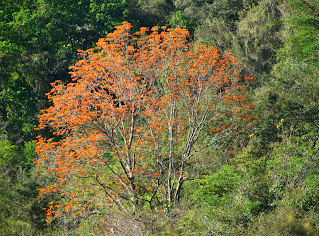Vermicomposting - The Worm Castle
 We recently completed yet another project on our property. We now have an area designated for worm composting or vermicomposting. I tried this, on a very small scale, in our basement in Seattle and quickly determined that we generated much more kitchen waste than the worms could consume in the small plastic tub I made for their home. I ended up moving the worms outside into a large round plastic composting bin. The worms thrived in there and we had rich compost for the plants.
We recently completed yet another project on our property. We now have an area designated for worm composting or vermicomposting. I tried this, on a very small scale, in our basement in Seattle and quickly determined that we generated much more kitchen waste than the worms could consume in the small plastic tub I made for their home. I ended up moving the worms outside into a large round plastic composting bin. The worms thrived in there and we had rich compost for the plants.Worm castings make excellent fertilizer for plants. I decided to give the worm composting plastic tub a try in Costa Rica. Acquiring and making the bin was no problem. Finding the right type of worms was the challenge. Redworms, or red wigglers are the type of worms required for vermicomposting. I dug around various places on our property and could only find night crawlers and earthworms. I decided to try with the earthworms, but the experiment didn’t work. I really needed the right type of worms.
 I read various internet message boards related to Costa Rica and gardening and just as I was setting up the plastic bin a thread was started about where to buy redworms. It became apparent that commercial and personal vermicomposting exist here. The worms could be purchased but we would have to drive about two hours to get them.
I read various internet message boards related to Costa Rica and gardening and just as I was setting up the plastic bin a thread was started about where to buy redworms. It became apparent that commercial and personal vermicomposting exist here. The worms could be purchased but we would have to drive about two hours to get them.Meanwhile, Mario was observing what I was doing. As he came across worms in the yard he would hand them to me for the bin, until one day I rejected more worms and told him I need to get the right type. Mario began asking his friends about redworms and he became interested in learning about this type of composting. I think he became most interested when he found out how much the worm compost retails for.
Mario found a local source for the worms and also visited a commercial operation and gleaned a lot of knowledge about how the process is done in Costa Rica. Next we needed to construct the right type of bins. Mario’s philosophy is to get the right knowledge or people together in order to complete projects correctly the first time. We had several discussions with him about the best way to set this up in our location.
 Near the area where we plan to build our house was an existing steel structure used to wash cattle and horses. We decided to move the structure and place it next to the vivero and use it as shelter for the worm bins. It took six men to move the structure, intact, to its new location. We determined the best, long term solution for bins was to use concrete. We hired our crew to build two raised concrete bins. The guys joked that they looked like coffins. Actually they are large enough for one person to lie down inside. The bins were constructed with a slight slope in order to collect the worm "juice" created by the worms.
Near the area where we plan to build our house was an existing steel structure used to wash cattle and horses. We decided to move the structure and place it next to the vivero and use it as shelter for the worm bins. It took six men to move the structure, intact, to its new location. We determined the best, long term solution for bins was to use concrete. We hired our crew to build two raised concrete bins. The guys joked that they looked like coffins. Actually they are large enough for one person to lie down inside. The bins were constructed with a slight slope in order to collect the worm "juice" created by the worms.The worms were hand delivered a few weeks after the structure, now called the “Worm Castle”, was in place. We made bedding in one bin out of composted chicken poo and in the other bin we used composted cattle poo. So far the worms seem to be happy. Soon I will begin to add all of our organic kitchen waste into the bins and in a few months we should be able to begin harvesting worm compost.
Update September 30, 2011 Click here to read an update on how the system is working out for us.




